Editor’s Note: Shelley Appleton is a new guest columnist for BestHorsePractices. Her articles are part of a body of work dedicated to horsemanship knowledge and self-improvement called: 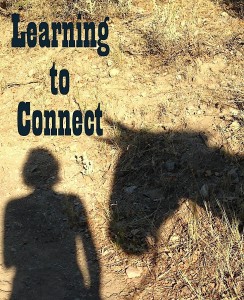 Learning to Connect.
Learning to Connect.
Appleton is a lecturer at the School of Pharmacy at Curtin University in Bentley, Australia, a dressage rider, and horse training coach.
After reading and watching Evidence-Based Horsemanship (EBH), a book and DVD by Dr. Steve Peters and Martin Black, and working with horseman Warwick Schiller, she made a “massive conceptual leap” which synthesized her horsemanship with her grasp of the 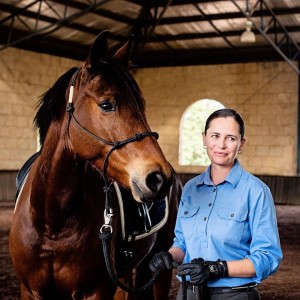 science.
science.
This year, she will be a guest lecturer in the Horse Physiology and Behavior unit at Murdoch University.
“My focus is on human learning and how to make decisions when working with horses. So much horsemanship focuses on the horse’s ‘problems’ or its ‘training’ when really the deciding factor is who is hanging onto its lead rope or sitting in the saddle.
Sign up for our free weekly newsletter!
By Shelley Appleton
As an instructor of dozens of riders, I’ve learned that degrees of student success have little to do with age or background. Nor do my students’ abilities correlate to their horse’s issues, how long they have been riding horses, or even their level of confidence or fear. One student, in fact, was so incredibly nervous at our first meeting that she temporarily forgot her horse’s name. Yet she has become one of the most amazing accelerated learners I’ve ever met.
What I have discovered in this woman and other super learners is four common traits:
- SELF FOCUS
While many initially came to fix for their horse’s behavioral issues, these students very quickly turned their focus to themselves.
- They readily acknowledge the mishandling of their horses and identify errors.
- They see the need to control their body, coordinate their tools, and refine their thinking.
- They realize how much these elements impact their horses’ behaviors.
Horses simply reflect our knowledge and skills. As Ray Hunt said – “a horse does one of two things – what he thinks he is supposed to do, or does what he thinks he needs to do to survive”.
Recognizing that horses reflect our own skills is a key distinguishing feature of people who demonstrate rapid improvement of their horse work.
Anthea, the student who forgot her horse’s name, may have been full of fear but her attitude that day gave her a performance edge:
Antheea had two dressage horses who had developed behavioral issues. With the first horse, she labelled it a ‘bad horse’. But when the next one developed the same problems, she identified herself as a common factor. She turned up ready to change herself and has made incredible advances.
- EMPATHY FOR THE HORSE
“It is difficult to be sat on all day, every day, by some other creature, without forming an opinion on them. On the other hand, it is perfectly possible to sit all day, every day, on top of another creature and not have the slightest thought about them whatsoever.”
from Douglas Adam’s novel Dirk Gently’s Holistic Detective Agency
People who accelerate their learning develop a strong sense of empathy and a desire to improve things for their horses’ sake. They see that their horse has a mind and that they as riders can communicate fluidly with simple cues by using consistent presentation and release of pressure.
- No need for engaging in a struggle to manipulate or fight with the horse with stronger bits, bigger spurs, and more tack for more leverage and more constraint.
- No need to label a horse as difficult, nervous, timid, or sensitive. When you can remove the horse’s frustration from the training equation, it becomes relaxed, calm and confident.
When riders start thinking about “that creature they sit on top of,” they see why their horse has developed behavior issues. The issues are not because the horse is stubborn, sensitive, hot, dominant, pig-headed, or of a certain breed. Rather, the horse lacked clarity from the rider. The human created the mental and/or physical discomfort.
- PREPARED TO STRUGGLE – NOT FEARING FAILURE
Accelerated learners don’t give up when they discover there is no quick fix to their horse’s problems and that working well with a horse is not as easy as it looks. They turn their focus from their horse to themselves and let the horse give them feedback of how they are performing.
They put in hours of practice. They video-record themselves. They send me messages outlining what they have learned to observe in their horse, how they interpreted it and what they did, their evaluation of the outcome, their plans. They tell me when things go wrong, when they feel frustrated or out of their depth. They tell me not just what they actually did in terms of technique, but what they think and feel.
These things indicate they are willing to persevere regardless of the struggle, the hardship, the success, or the failures. They see everything as a learning opportunity and a process of refinement – from the way they make decision, to the way they swing a rope, or the way they sit in the saddle.
- COMMITMENT TO THE PROCESS
Motivation is what gets you started and commitment is what keeps you going.
Consider my student, Anne-Maree, and her big chestnut warmblood gelding, Max (he of more than 17 hands of negative thoughts and “bad” behavior). Anne-Maree had made some progress on the ground, but under saddle he was still dangerous.
Over 18 months, Anne-Maree dug deep into his ground work responses and transferred positive changes into the saddle step by
step. As a result she has replaced Max’s negativity with confidence and willingness. The photo represents the transformative power of good training approaches and of Anne-Maree’s commitment. If a horse needs to step back in its training to gain clarity or confidence, accelerated learners are those who can make that step back. They put aside their desires and frustrations and do what needs to be done. Read more about going backwards in order to progress.
We all have a tremendous capacity to be exceptional with horses. It has nothing to do with age, prior experience, income, or education. When I watch riders like Anthea and Anne-Maree, I feel I’m witnessing a revolution. Maybe it’s limited to my hometown, but I have a feeling it’s bigger than that.
Sign up for our free weekly newsletter!
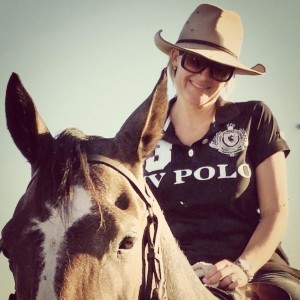

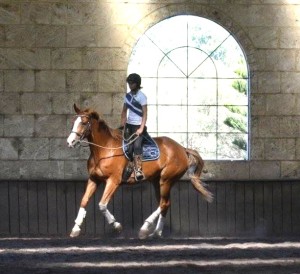
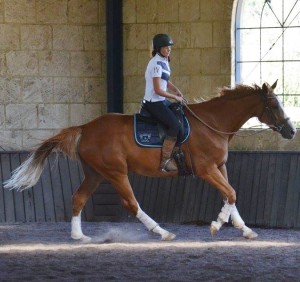
Looking forward to reading more!
The more I take responsibility for my role in the way things go… horse related or otherwise, the more empowered I am since I’m not longer harboring the belief that I’m a victim of something.
right on, Jaime. Thanks for your comment.
Thanks…I love the acknowledgement about going back in order to go forward. I think it’s as true for us as them. I’ve been riding all of my life, the older I get, the more easily a fall can really set me back in confidence…and I’ve found that “allowing” myself to go back to basics and rebuilding with the horse helps me rebuild my confidence to even higher than it was before. My experience was that many in the horse world want to judge loss of confidence with derision which only increases the self flagellation and for some turning away from riding 🙁 ~ riding is a sport and sports psychology is a very helpful thing for getting over injuries.